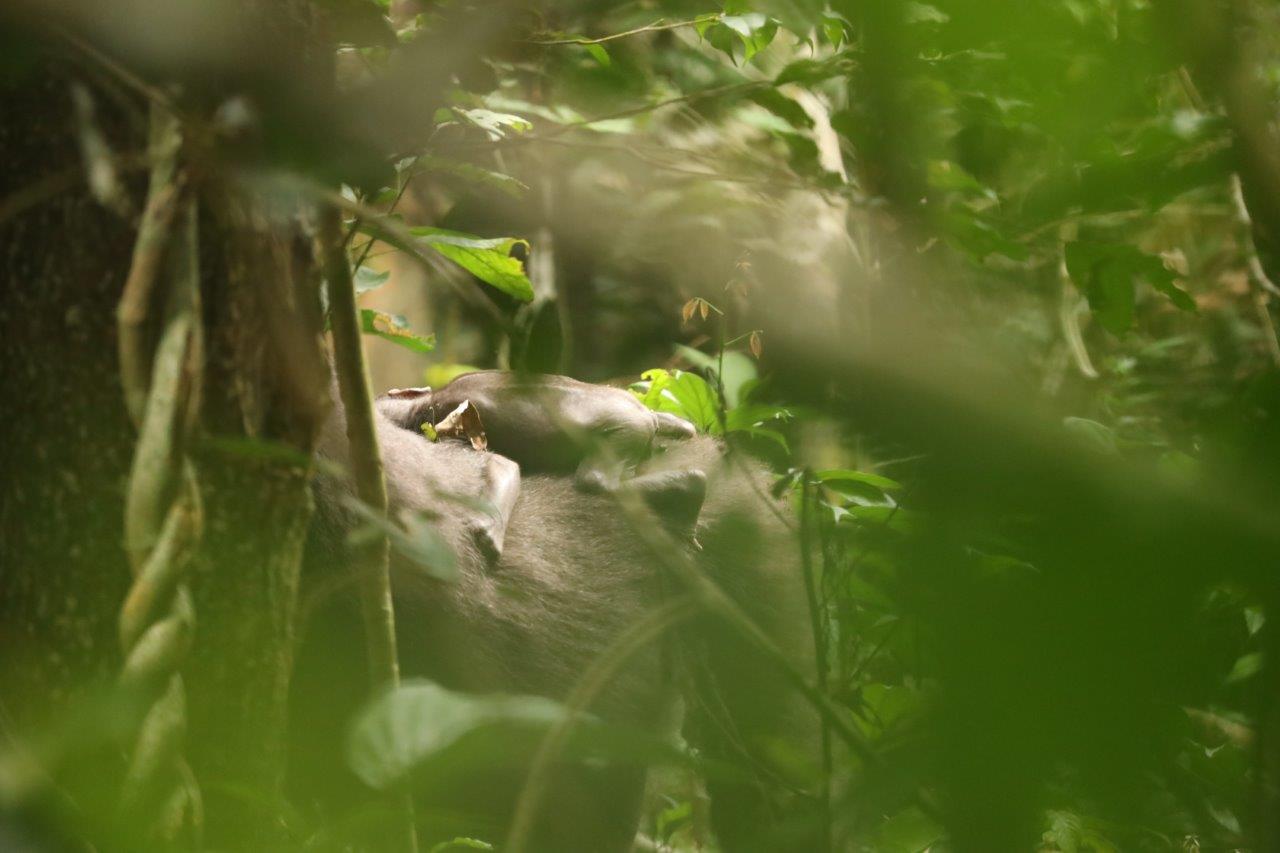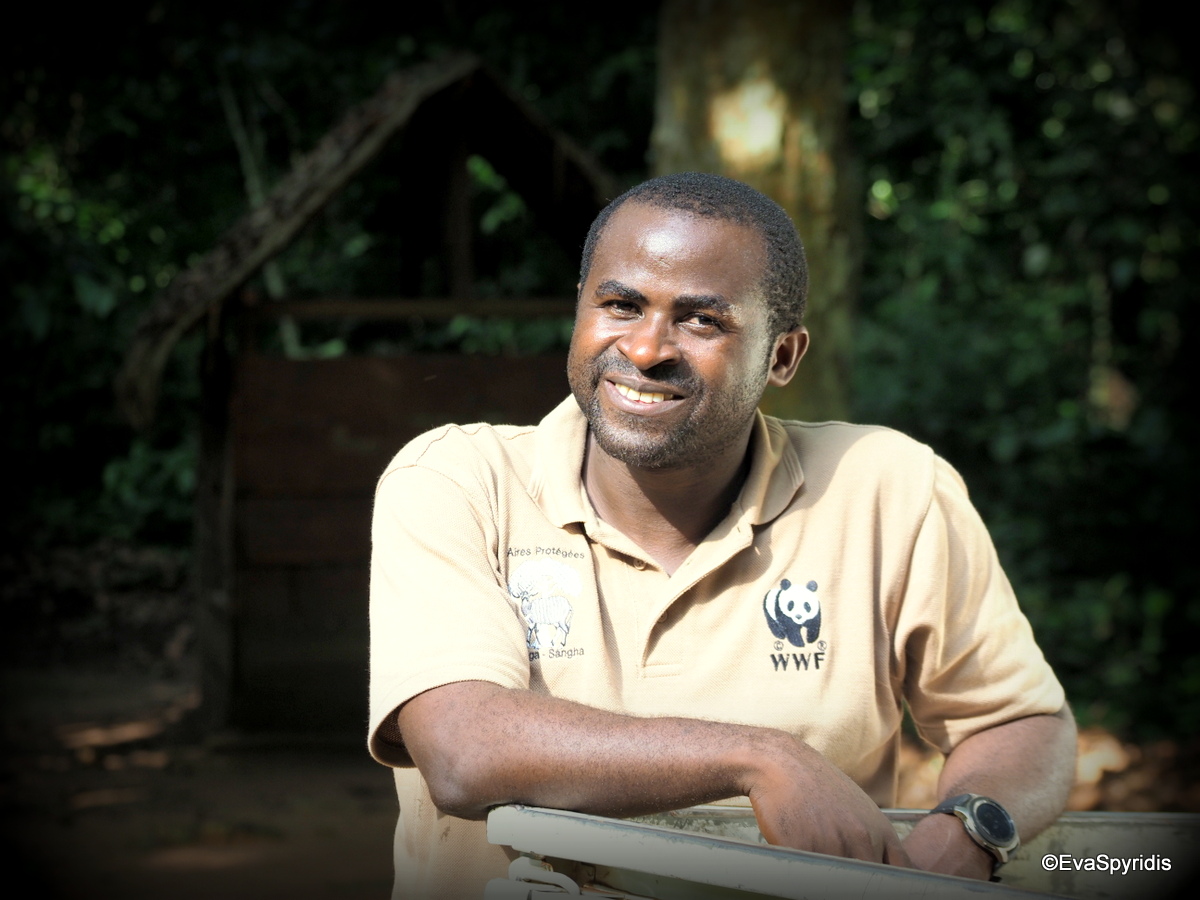
Mata and Mayele, as the silverbacks were known are two of the very few wild western lowland gorillas habituated to human presence. They represent hope for gorilla conservation. I contributed to their habituation and dedicated the past eleven years of my life to wildlife conservation in Dzanga-Sangha.
What is habituation all about
Habituation is the process during which wild animals gradually accept human observers close to them without interfering in their daily activities. In Dzanga-Sangha, three gorilla groups have been habituated to human presence for tourism and research with the aim of ensuring the population viability of gorillas while providing tangible incentives for the livelihoods of the local community. Gorilla tracking revenue makes up about 50% of tourism revenue in Dzanga-Sangha and the habituation programme is a major source of employment for the local population, employing over 60 local people including over 40 Indigenous Ba’Aka. It generates significant revenue and strengthens the vital link with the community, hence acting as an important conservation tool.
Mata, a silverback estimated to be about 32 years old is the leader of his group ranging in Bai Hokou. "Mata" (which means ‘next of kin’ or ‘successor’ in the Aka language) was named following his occupation of the home range previously occupied by another habituated gorilla group. The group whose habituation started in 2010 was only officially opened for tourism in April 2019 due to interruptions of the habituation process by the political crisis in CAR.
Suring that period, we rather concentrated effort to ensure the safety of fully habituated groups. Mata acquired four females at his peak and sired at least seven offspring. He was very caring towards his offspring. During the last stages of habituation, he would push his infants away from human observers, every time he felt they were too close. His behaviour towards his offspring was unique and not typical of other western gorilla silverbacks. For example, back in 2018, we anaesthetized one of his females to get out a metal snare from her wrist and during the operation Mata picked up her 3-month-old offspring and cared for it until she recovered.
The Mayele group ranging in Mongambe (about ten kilometres from Bai Hokou) is led by the silverback Mayele estimated to be about 40 years old. “Mayele” which means “crafty or sneaky” in Aka language, was named by the Ba’Aka trackers following his habit of constant abrupt changes in direction as if to intentionally confuse the tracking team during the habituation process.
His habituation started in November 2005 and the group was officially opened to the public in 2010. During his tenure, he acquired five females and sired at least 17 offspring. Unlike Mata, Mayele was a rather relaxed and stress-free silverback who sometimes allowed his family to wonder as far as half a kilometre from him. As a result, his group was usually more spread out in the forest.
The cause of death
The deaths seem to be completely unrelated to each other. The tracking team at the Bai Hokou field site found Mata dead on the morning of August 31, 2022. He had fractures on the neck and limbs but there were neither signs of poaching nor of a fight with another gorilla. The cause of death is still unclear, even though the tracking team thinks he might have fallen from a tree.
Mayele on the other hand was found seriously injured on the morning of September 20, 2022, following a fight the night before, probably with a solitary silverback. He had very deep wounds on the chin, chest, arms and legs, and his lower lip completely bitten off. He had lost a lot of blood which could be seen spilled all over the site of the interaction and he was unable to move. The following morning, he was even weaker than the previous day and had not moved from the scene. He was administered an anti-biotic using a dart to prevent possible infections. Unfortunately, he did not survive the injuries and died later that day in the presence of the veterinary and tracking teams.
Is there any hope for the rest of the Mata and Mayele group members?
The future of these groups is uncertain. Silverbacks are the bonds that keep gorilla groups together and their death may lead to the disintegration of the groups. Mata left behind two females and four offspring aged between one and six years old. Just two weeks following his death, a silverback trying to take over the group killed one of the infants. The Mayele group left with three females and six offspring has a 14-year-old blackback who could still defend the group. Yet it is uncertain if he could keep the group together and become its next leader. There is so much to observe in the days ahead.


The future of gorilla ecotourism in Dzanga-Sangha
Inter-group interactions, migration of individuals, silverback challenge, infanticide and disintegration of gorilla groups are all natural phenomena. It is the reality of what happens in the gorilla world. However habituating gorillas to huma presence requires a lot of time and resources. The death of habituated gorillas and potential loss of habituated groups would be devasting for ecotourism. The habituation programme has demonstrated that it could eventually become self-sustaining. It has greatly contributed to improving the living conditions of the local community through employment, revenue sharing schemes and social services as well as helped to preserve the traditional forest skills of the increasingly urbanized Ba’Aka community. It has also provided the opportunity for over 5.000 visitors to view these amazing gorillas. Most importantly it has increased their overall protection in the area.
There is just no way to give up, we will continue habituating gorillas in Dzanga-Sangha.



